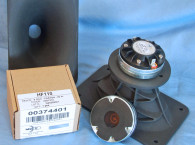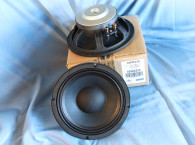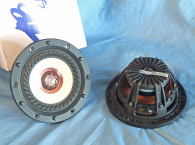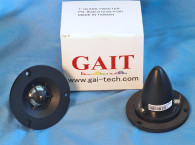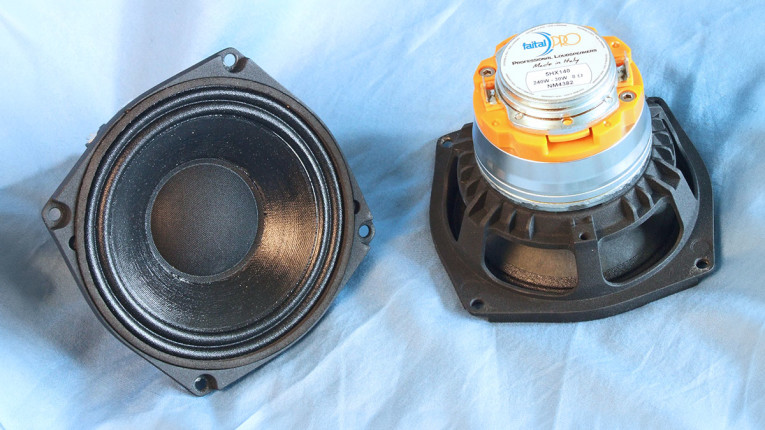
However, of all three market segments — home, car, and pro — pro sound seems to have embraced the technology the most, with home audio a close second. Virtually all pro sound OEM driver manufacturers have a line of coincident coaxial drivers that combine a woofer and a compression driver with a conical horn in sizes ranging from 4” to 15”.
For this Test Bench, Faital Pro sent a great new example of this genre, the 5” 5HX140 coincident coaxial transducer, shown in Photos 1-3. In terms of features, the 5HX140 woofer is built on a proprietary six-spoke cast-aluminum frame. Cooling for this driver is provided by the substantial motor mass plus four 20mm x 1.65mm vents between the bottom of the frame and the front plate that allow air to flow past the voice coil over the front plate.
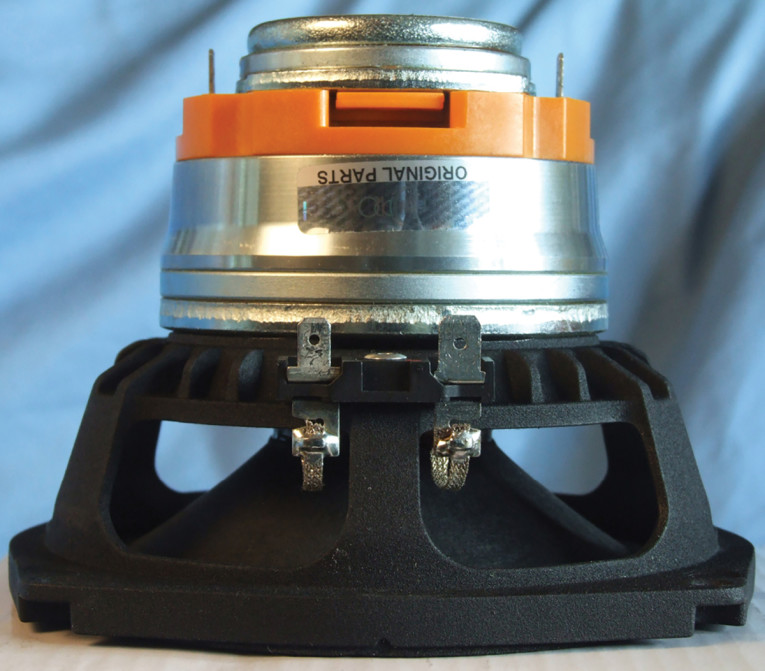
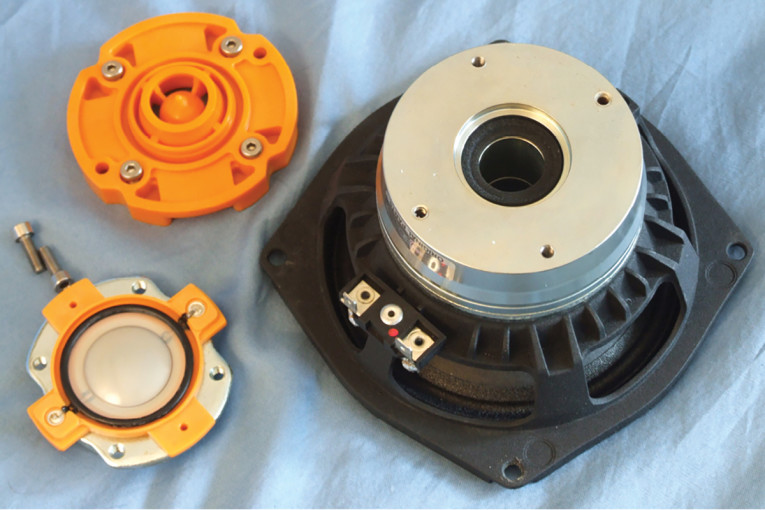
The woofer cone assembly comprises a flat profile paper cone with a water-resistant coating on the front side, a coated pleated M-type fabric surround, and a porous acoustically transparent cloth dust cap over the compression driver conical horn. Remaining compliance is provided by 3.5” diameter flat cloth spider (damper) with the flat braided tinsel leads stitched into the spider on one side of the driver. This is combined with a 37mm (1.46”) diameter voice coil wound with round aluminum wire on a non-magnetically conducting Kapton former.
Driving the cone assembly is a 76mm x 4.75mm neodymium ring magnet sandwiched between a 6mm front plate and an 18mm milled back plate that forms the throat for the conical compression driver horn. This substantial motor mass, as already mentioned, also greatly contributes to the voice coil cooling mechanism and accounts in part for the substantial (for a 5” woofer) 120W AES power handling rating. The motor also features an aluminum demodulation (shorting) ring. Sensitivity for the woofer is rated at 91dB 1W/1m (averaged within the operating range).
The high-frequency compression driver has its own 50mm x 4mm neodymium ring magnet motor system that drives the 25mm Kapton Polymer dome-shaped diaphragm. The 25mm diameter voice coil is also wound with aluminum wire on a Kapton former. This Kapton Polymer diaphragm fires into a short 90° aluminum conical-shaped horn. Figure 1 shows the horizontal beamwidth plot of the compression driver/conical horn, which brings the sensitivity to 101dB, with a recommended crossover frequency of 1.5kHz to 2kHz and a rated AES power handling of 15W.
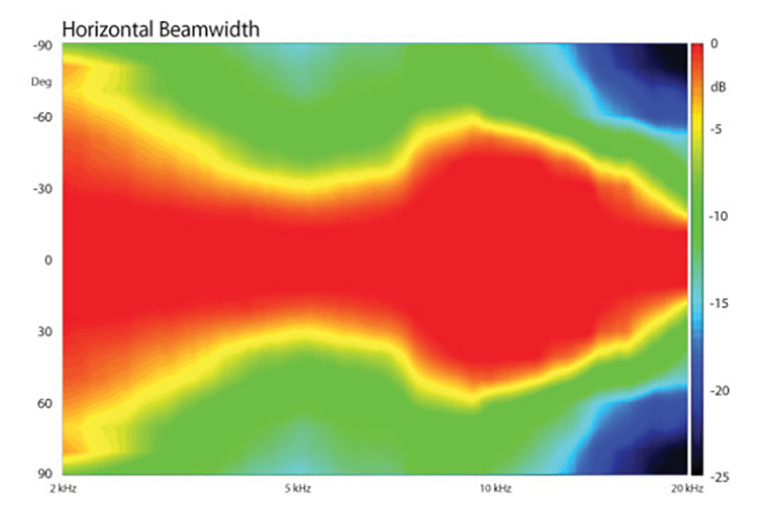
Terminals for the compression driver are located on the injection-molded diaphragm cover on the back of the motor structure and on the frame for the woofer. Applications for the 5HX140 are primarily as a PA fill driver for small or separated spaces such as under balconies, as a personal stage monitor, or as the mid/hi section of a studio monitor.
Testing began with the woofer half of the Faital Pro 5HX140 coaxial driver using the LinearX LMS and Physical Lab IMP Box (the same type voltage/current fixture as a LinearX VI Box) to create both voltage and admittance (current) curves with the driver clamped to a rigid test fixture in free-air at 0.3V, 1V, 3V, 6V, 10V, and 15V while gradually increasing the oscillator on time between sweeps to simulate the actual thermal process over time (reaching the third time constant). The 15V curves were still linear enough to get a sufficient curve fit and were included, which is impressive for a 5” woofer.
Following my established protocol for Test Bench testing, I no longer use a single added mass measurement and instead use the company supplied Mmd data (6.6 grams for the Faital Pro 5HX140). The collected data, in this case the 12 550-point (0.3V to 15V) sine wave sweeps for each Faital Pro sample were post-processed and the voltage curves divided by the current curves to generate impedance curves, with the phase derived using the LinearX phase calculation method. The data, along with the accompanying voltage curves, were imported to the LEAP 5 Enclosure Shop software. Figure 2 shows the woofer 1V free-air impedance curve, along with the compression driver free-air impedance curve. Table 1 compares the LEAP 5 LTD/TSL TSP data and factory parameters for both Faital Pro 5HX140 samples.

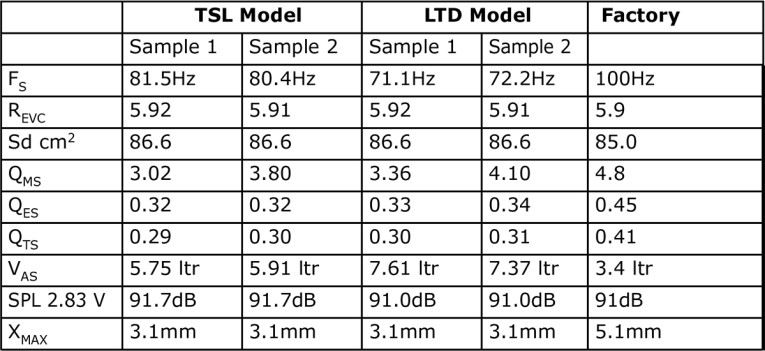
Parameter measurement results for the Faital Pro 5HX140 appeared different, but Fs/Qt ratios were not radically off. In the same sealed box simulation, my data yielded a F3=166Hz/Qtc=0.69 compared to the factory data of F3=173Hz/Qtc=0.69, so definitely some variation, but also not seriously far off either. The Xmax differs only because Faital, like several other manufacturers, includes fringe field compensation in their Xmax number (Xmax = [(voice coil length- gap height/2) + (gap height/3)].
Given all this, I proceeded to set up two computer enclosure simulations using the LEAP LTD parameters for Sample 1, a Butterworth alignment sealed box with a 94in3 volume and 50% fiberglass fill material, and a vented QB3 alignment with a 140in3 box volume tuned to 91Hz, and with 15% fiberglass fill material.
Figure 3 displays the results for the Faital Pro 5HX140 woofer in the sealed and vented enclosures at 2.83V and at a voltage level sufficiently high enough to increase cone excursion to Xmax+15% (3.6mm for the 5HX140). This produced a F3 frequency of 166Hz (-6dB=131Hz) for the closed enclosure with a Qtc=0.69, and a –3dB=127Hz (-6dB=101Hz) for the QB3 vented box. Maximum linear excursion (Xmax+15%) resulted in 110dB at 31V for the sealed box simulation and 113B at 32V input for the vented enclosure. Figure 4 shows the 2.83V group delay curves. Figure 5 shows the 31V/32V excursion curves.
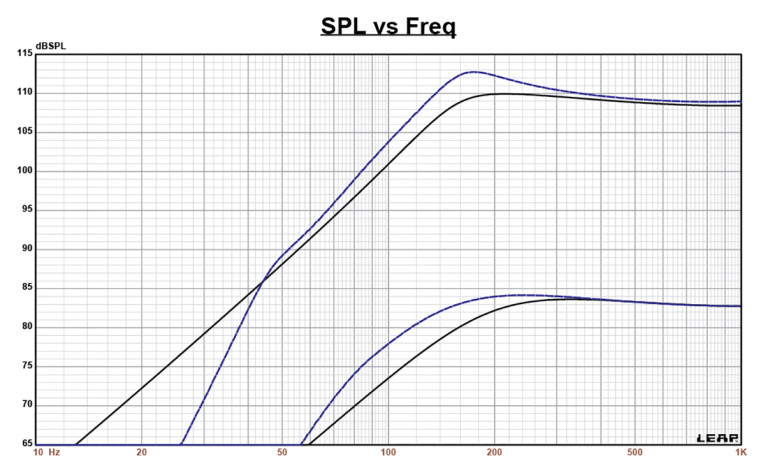
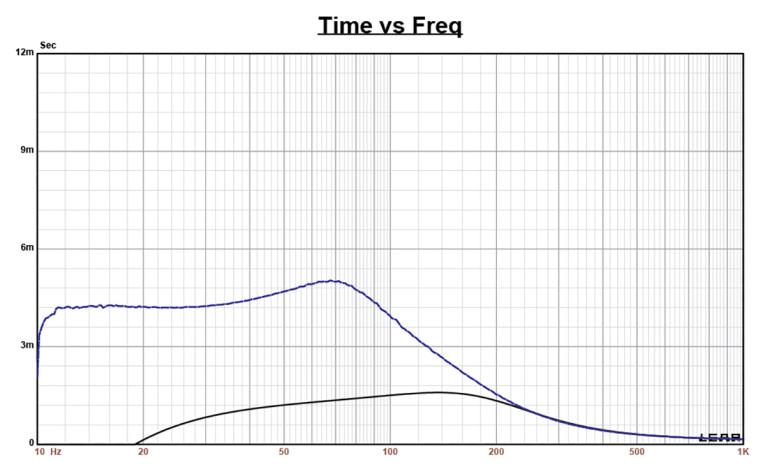

Klippel analysis for the Faital Pro woofer half of the 5HX140 was performed this month at Warkwyn by Jason Cochrane using the Klippel KA3 modular analyzer. The Bl(X) curve for 5HX140 (Figure 6) is moderately symmetrical and reasonably broad for a small diameter 5” driver, but also with a slight degree of “tilt” and small amount of offset. The Bl symmetry curve (Figure 7) shows less than 0.39mm forward offset once the graph reached a place of certainty at the 2.0mm Xmax point, staying constant out to the drivers physical Xmax at 3.1mm, suggesting this is just a small physical offset, and not consequential. Figure 8 and
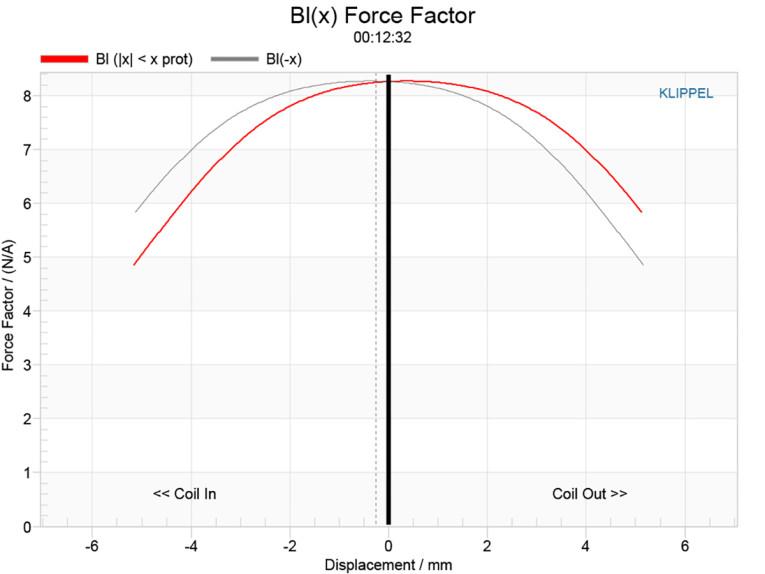
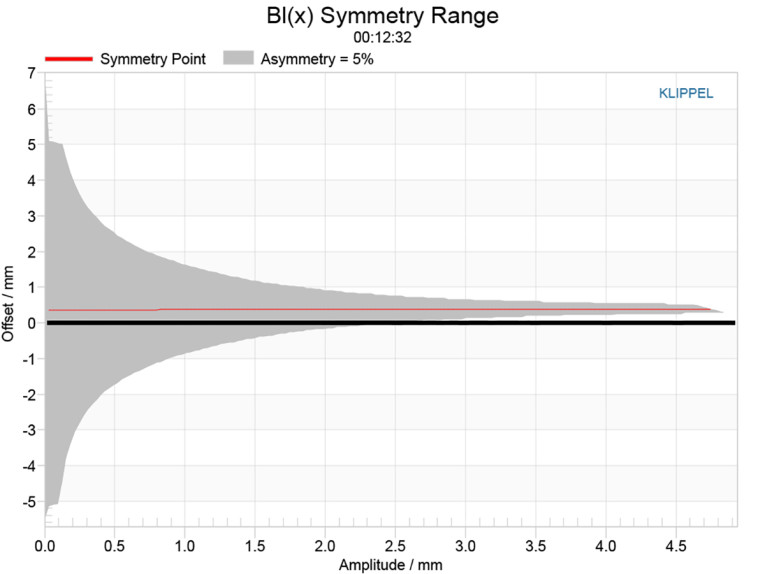

Figure 9 show the Kms(X) and Kms symmetry curves for the Fatial Pro 5HX140 coax. The Kms stiffness of compliance curve (Figure 8) is also broad and symmetrical and with a small amount of tilt and offset. The Kms symmetry range curve (Figure 9) indicates a likewise near-constant forward offset of 0.65mm forward offset at the 1.5mm point of reasonable certainty, and does not vary much through the entire range of this transducer’s excursion profile, and is at 0.63mm at the 3.1mm physical Xmax point.
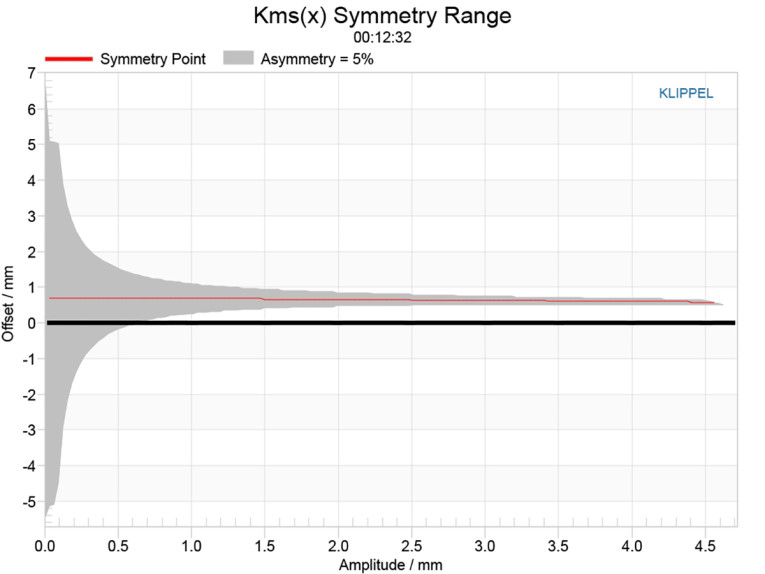
Displacement limiting numbers calculated by the Klippel analyzer for the using the full-range woofer criteria for Bl was XBl @ 82% (Bl dropping to 82% of its maximum value) was 3.47mm (slightly greater than the physical Xmax for the 5HX140) for the prescribed 10% distortion level. For the compliance, XC @ 75% Cms minimum was only 2.58mm, which means that for the Faital Pro woofer section of this coaxial driver, the compliance is the more limiting factor for getting to the 10% distortion level.
Figure 10 gives the inductance curves Le(X) for the 5HX140. Inductance will typically increase in the rear direction from the zero-rest position as the voice coil covers more pole area, which is not what is happening here, and typical of this type of neodymium motor that incorporates an aluminum demodulation (shorting) ring. The maximum inductance swing for this driver from Xmax in to Xmax out is a low 0.04mH, which is good inductive performance for this neodymium woofer motor.
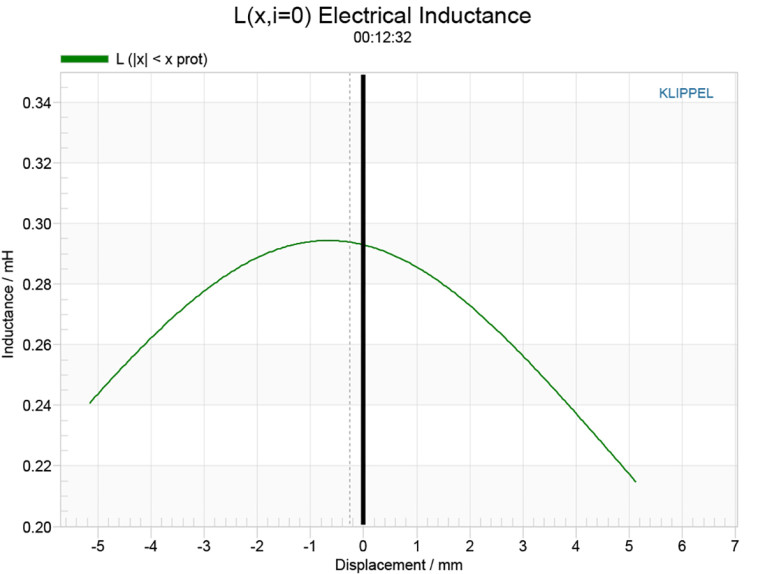
With the Klippel analysis completed, I proceeded to mount the Faital Pro 5HX140 in an enclosure, which had a 15”x7” baffle filled with foam-damping material. Then, I measured both the woofer and the compression driver on- and off-axis from 200Hz to 40kHz at 2V/0.5m, normalized to 2.83V/1m using the Loudsoft FINE R+D analyzer and the GRAS 46BE microphone (courtesy of Loudsoft and GRAS Sound & Vibration).
Figure 11 gives the 5HX140 woofer’s on-axis response along with the compression driver’s on-axis response. The woofer has a gently rising response at ±3.5dB out to 5.7kHz, where it begins typical second-order low-pass roll-off following a 10dB peak. For the compression driver, the response exhibits a constant directivity profile that extends from 1.2kHz out to beyond 20kHz, with some ±3dB undulations along the way.
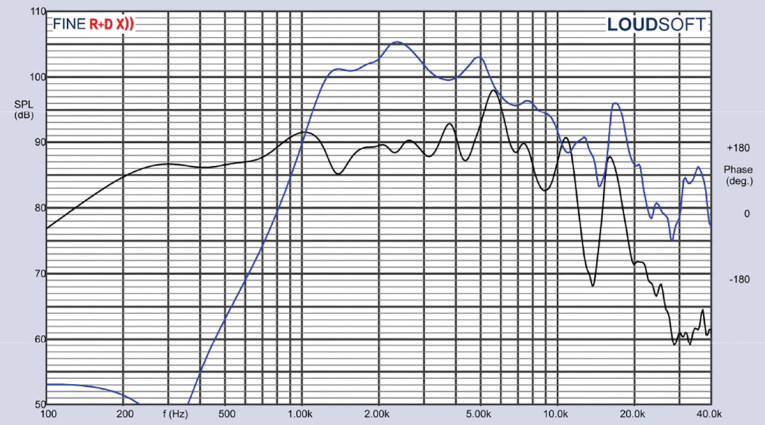
Figure 12 depicts the woofer on- and off-axis frequency response at 0°, 15°, 30°, and 45°. The -3dB at 30° with respect to the on-axis curve occurs at 1.8kHz, which coincides with recommended crossover frequency for the compression driver and conical horn between 1.5kHz to 2kHz. Figure 13 gives the normalized version of Figure 12.
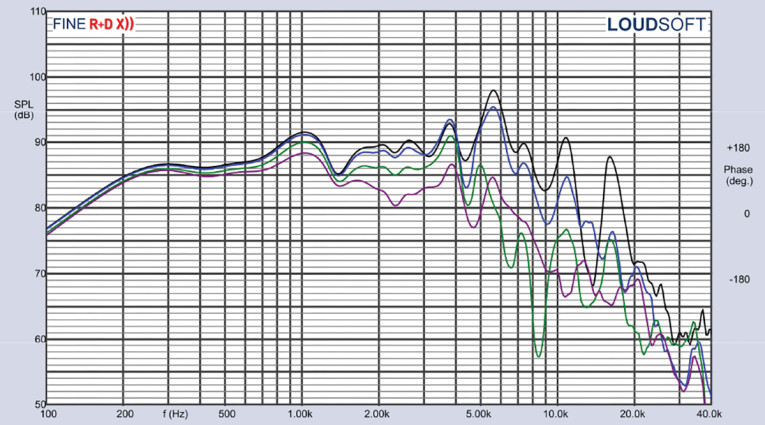
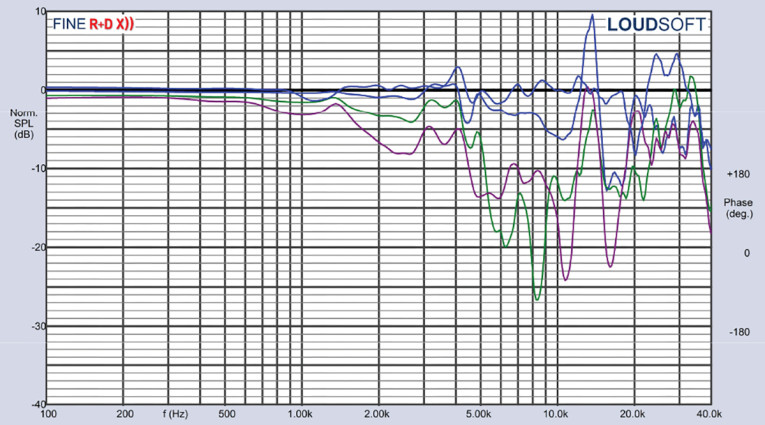
Figure 14 depicts the CLIO 180° polar pot (in 10° increments). And last, Figure 15 gives the two-sample SPL comparisons for the 5HX140 woofers, both samples matched within 0.5dB to 1.0dB within the woofers’ operating range.
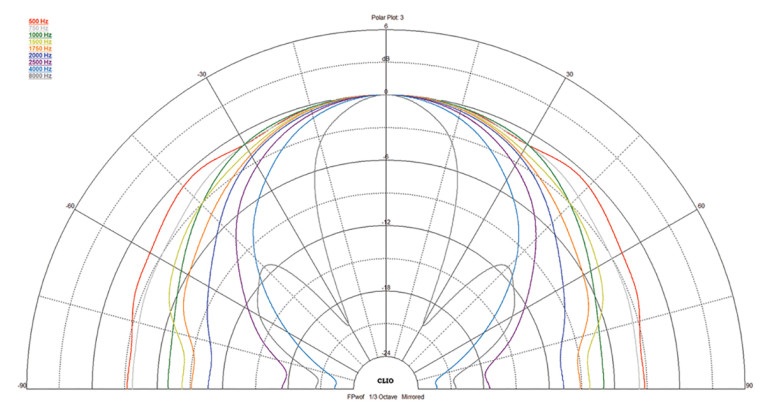

For the compression driver and 90° conical horn combination, Figure 16 gives the on- and off-axis horizontal frequency response out to 45°, with the normalized version shown in Figure 17. Figure 18 shows the CLIO 180° polar plot (processed in 10° increments). Figure 19 depicts the two-sample SPL comparison for the compression driver half of the 5HX140 coaxial, which is within 0.5dB to 1dB out to 10kHz.
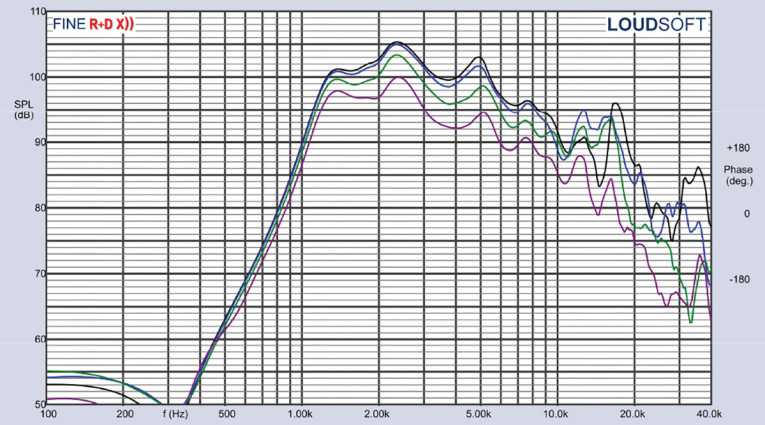
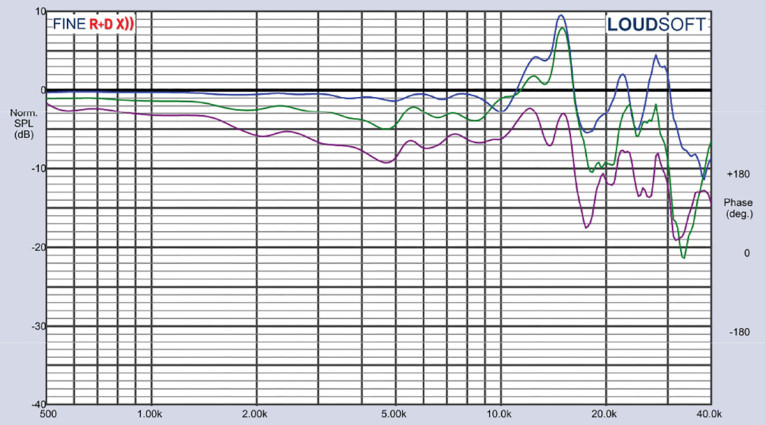
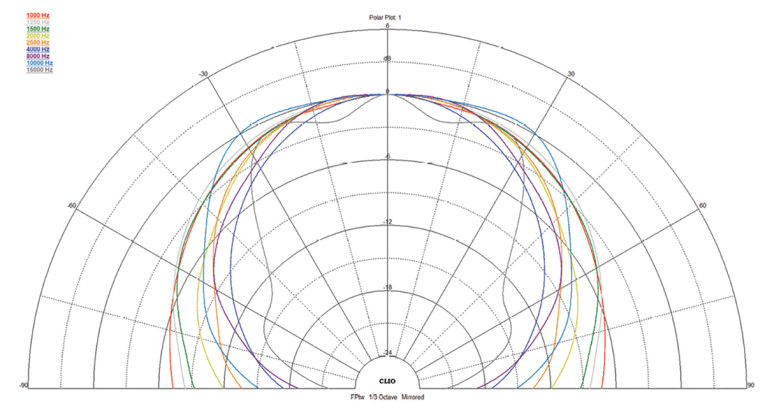

The final group of tests was performed using the Listen AmpConnect analyzer and SC-1 microphone (courtesy of Listen, Inc.), along with the SoundCheck software to measure distortion and generate time-frequency plots. Setting up for the distortion measurement consisted of mounting the driver rigidly in free air and setting the voltage level determined to raise SPL to 94dB for the woofer (104dB for the compression driver) at 1m using a pink noise stimulus. (SoundCheck has a software generator and SPL meter as two of its utilities.)Then, I measured the distortion with the Listen microphone placed 10cm from the woofer dust cap and tweeter horn. This produced the distortion curves shown in Figure 20 for the woofer (6.2V) and Figure 21 for the compression driver/conical horn.
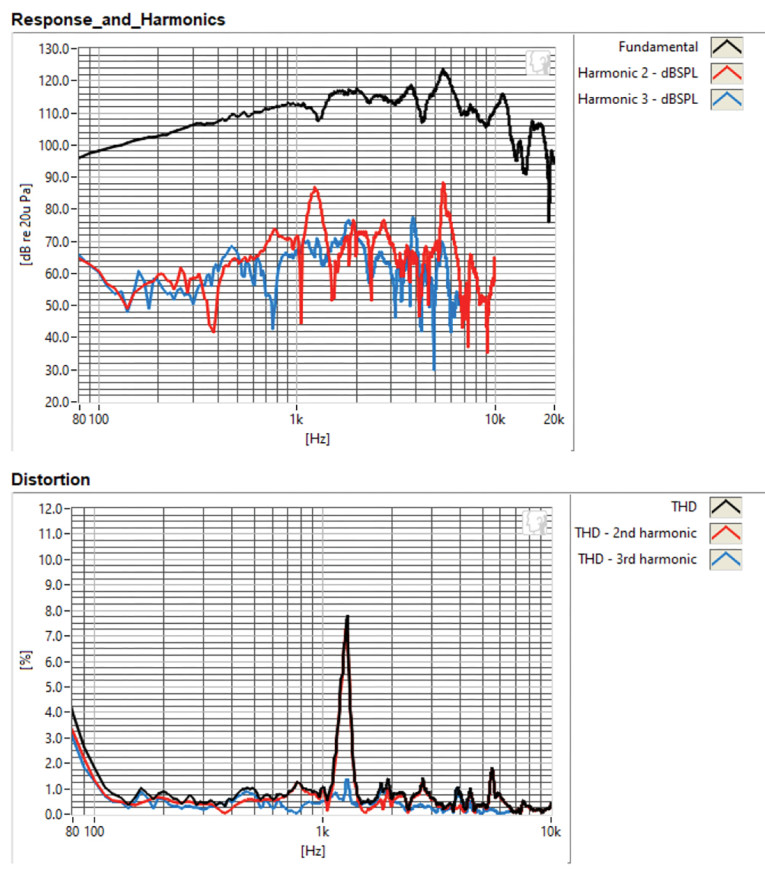
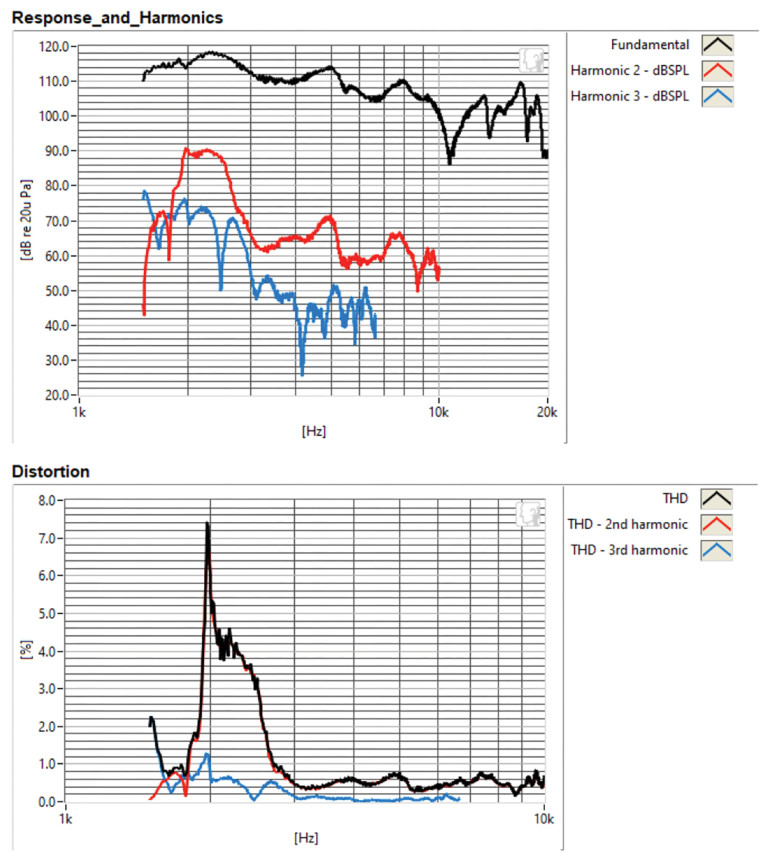
With the distortion testing completed, I set up SoundCheck to produce a 2.83V/1m impulse response for both the woofer and compression driver and imported the data into Listen’s SoundMap Time/Frequency software. The resulting CSD waterfall plots are given in Figure 22 for the Faital Pro 5HX140 woofer and in Figure 23 for the compression driver/conical horn. For the final SoundMap graphic output, Figure 24 gives the woofer’s Wigner-Ville logarithmic surface map (chosen for its better low-frequency performance) and Figure 25 displays the compression driver’s Short Time Fourier Transform (STFT) plot.


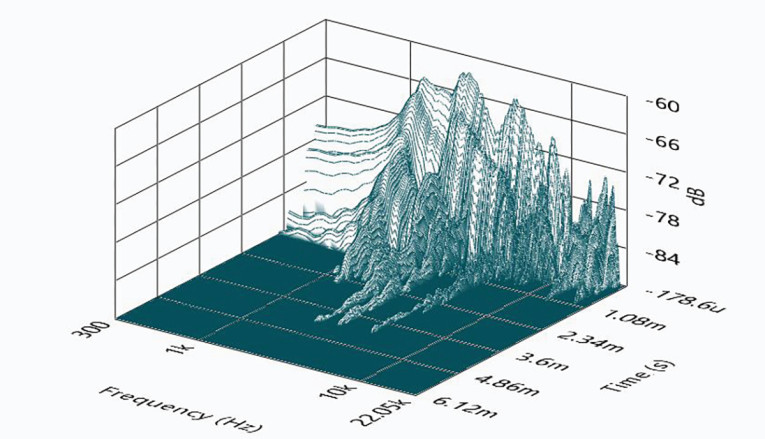
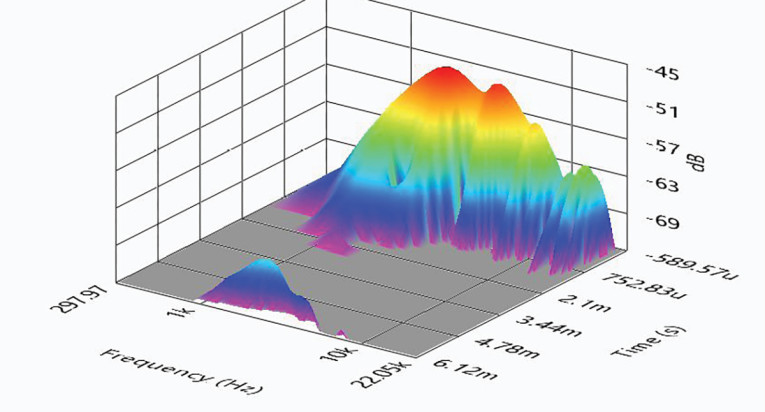
With all this data taken together, the Faital Pro 5HX140 is a well-designed and cost-effective pro sound coaxial. Faital Pro’s products are consistently well engineered with good performance characteristics and trade-offs, with the 5HX140 representing another good example of the company’s craft. For more information, visit the Faital Pro website at www.faitalpro.com. VC
This article was originally published in Voice Coil, May 2024




